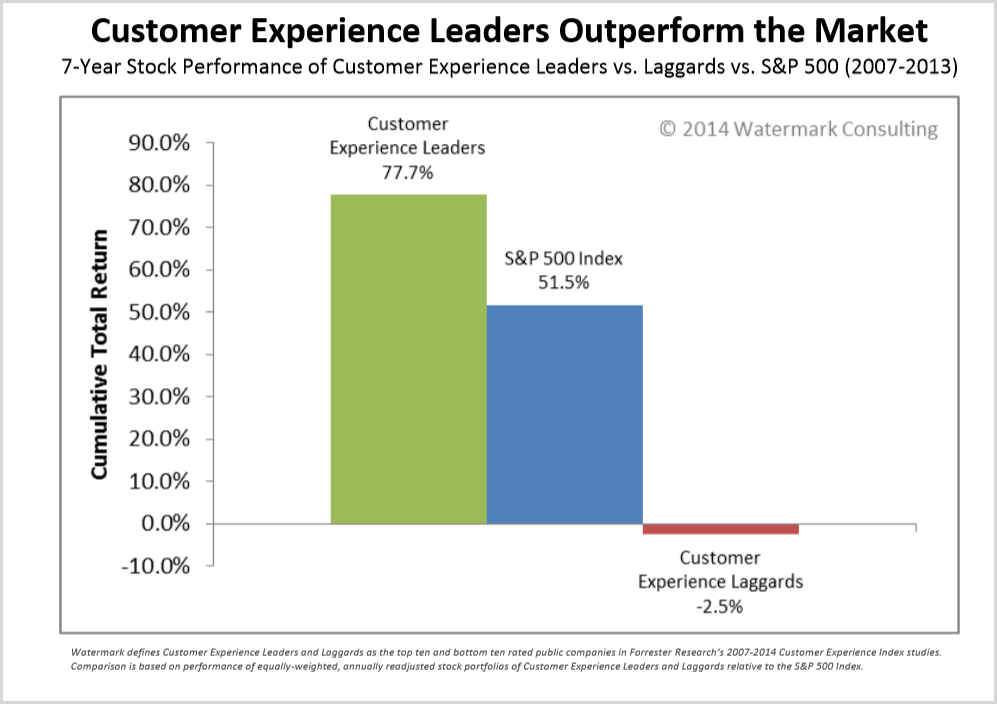It seems dead-simple common sense that B2C buyers are emotionally driven to purchase the products they do (does this Apple Watch make me look cool? Rich? Fat?); after all, it’s all very personal. And B2B buyers are more cold-bloodedly concerned about product details, payment schedules, and competitive differentiators. It’s not as personal … right?
If you think that’s the case, you’re wrong. And you’re not alone.
Marketers need to understand the psychological drives behind B2B purchases, as well as the emotions in play. B2B buying is driven not only by logic, testing, and facts, but also by the emotional connections created by the brand-to-customer relationship – and by the very real career risk of making a wrong choice.
Google’s research with Motista and CEB shows that emotions and branding are very much connected. For example, if a B2B buyer is emotionally connected to your company’s brand, then it’s highly likely that the buyer will consider buying from you. In fact, 50% of buyers are more likely to purchase your products. If they perceive personal value for themselves, the numbers are even better – plus, they’ll pay a higher price.
What does “personal value” mean? The CEB report notes it as professional benefits (such as a promotion), social benefits (popularity) and emotional benefits (confidence). These all engender positive emotions. On the flip side, personal value also means avoiding the negative consequences and emotions of perceived risks: loss of credibility, wasted time, or getting fired.
Emotions & Customer Experience
We can postulate that since emotions play such a key role in making the sale, they probably affect customer experience and customer satisfaction. Watermark Consulting studies the cumulative total stock returns for two model portfolios (comprised of the Top 10 [“Leaders”] and Bottom 10 [“Laggards”] publicly traded companies in Forrester Research’s annual Customer Experience Index ranking. The 2014 Customer Experience ROI study includes this chart, which speaks (loudly) for itself:
The bare facts (such as specs and features and capabilities) just aren’t enough anymore (if they ever were) to convince prospects to purchase your products or services. Here’s one more data point from the Google/Motista/CEB study: When 3,000 B2B buyers were asked “Do you see a real difference between suppliers and value the difference enough to pay for it?” 86% of the respondents said no.
So it is critically important that you make a meaningful, positive emotional connection in your B2B marketing campaigns. How to do that? It starts with empathy.
The Power of Emotion
A study by The Good Relations Group reveals what C-suite executives consider before making decisions related to any technology purchases. Of the 145 executives who took part in the survey:
- 93% expressed the importance of working with an honest vendor
- 91% said they made purchases based on personal recommendations
- 73% of executives seemed more likely to purchase a product based on the perception of a strong brand
These factors all involve creating an emotional connection that resonates with individual buyers, and trust is a key factor as well. After all, making a decision to create and implement an expensive product or service is a risk that’s likely to affect any company over the long term. No one wants to be that person who championed a bad vendor, or picked the system that failed and cost the company important customers.
Negative Emotions Work Too
Though positive emotions are more relevant in B2B marketing, director of marketing for Cvent Europe David Chalmers points out that negative emotions work, too. “Emotional connections do not necessarily have to be linked to a buyer’s love of a brand they intend to buy from,” he says. “You don’t have to love a brand to connect with it; sometimes other equally powerful emotions, such as fear, can be evoked to make a connection with buyers. Convincing your buyers by taking away their fears of making wrong decisions or failure through delivering the right message is enough to engage them at an emotional level.”
The Customer Connection
As noted in the book Emotionomics: Leveraging Emotions for Business Success by Dan Hill, the emotional brain processes sensory information in one fifth the time the cognitive brain takes. This means people – your prospects – feel before they think. You’ll be ahead of the game if you find a way to work with this human characteristic rather than ignore the possibilities.
First, understand how much  your buyer values his or her job. The more responsibility someone has, the more likely they are to check their work email first thing in the morning and last thing at night. They are judged by the results they get and the decisions they make. If the B2C buyer chooses the wrong thing (the wrong color of lipstick, the wrong number of doors for the new car) the damage is minimal or contained, and it doesn’t affect their job. If the B2B buyer makes the wrong decision, it could be their job (and livelihood, and professional reputation). B2B buyers carry more risk, both personal and professional, and for that reason there’s a lot more emotion involved in decision-making.
your buyer values his or her job. The more responsibility someone has, the more likely they are to check their work email first thing in the morning and last thing at night. They are judged by the results they get and the decisions they make. If the B2C buyer chooses the wrong thing (the wrong color of lipstick, the wrong number of doors for the new car) the damage is minimal or contained, and it doesn’t affect their job. If the B2B buyer makes the wrong decision, it could be their job (and livelihood, and professional reputation). B2B buyers carry more risk, both personal and professional, and for that reason there’s a lot more emotion involved in decision-making.
Listen to your customers. Talk to them. Do surveys. Notice the language they use on social media. Videotape interviews and have a psychologist tell you which emotions they observe. Apply your findings to your content and messaging, and test. “Pay attention” is the first rule, and should be the last one as well.
Remember that people like to buy from people, particularly people they trust. One good way to connect with customers is to make your company feel human to them. That shouldn’t be difficult; after all, your company is made up of people. But some organizations have a hard time letting go of the tight control that used to be the hallmark of building a brand. It’s a good idea to get over that, as buyers really do look for that personalization, and they really do have the upper hand these days. And: the Internet and social media have made sure that the genie is well out of the bottle. That’s where your customers are, and there they welcome people and resist monolithic brands. It’s also a good place to cultivate those personal recommendations that CEOs trust.
Storytelling Creates Powerful Feelings
 Buyers are keen on understanding whether a product or service is right for them. But listing the benefits of your products or services isn’t always compelling. In a world full of choices, connecting with prospective buyers by telling a story can be a better and more effective way to convince them to consider the benefits of your products or services.
Buyers are keen on understanding whether a product or service is right for them. But listing the benefits of your products or services isn’t always compelling. In a world full of choices, connecting with prospective buyers by telling a story can be a better and more effective way to convince them to consider the benefits of your products or services.
Stories have an emotional component that’s lacking in benefit statements, data sheets, and white papers. Stories can bring a product or service experience to life. For example, if your product has an interesting history, it can build interest among buyers. Legacy brands with long, well-known histories like GE, FedEx, Exxon, and Apple are able to take advantage of the fact that their names are well-known to their B2B customers. Newer companies need to work harder to create their own identities (but they also don’t have to struggle to shed an obsolete image or manage a long-standing controversy).
You can make your brand more human by telling stories. One great source for stories to tap into is the voice of the customer. Act-On, for one example, features customer success stories so prospects can hear about the benefits of our solutions in very relatable, meaningful terms.
Eddie Yoon’s story about Generac in the Harvard Business Review provides a spectacular example:
Generac, the leading standby generator manufacturer (machines that provide backup power when your power goes out), [asked their customers to draw their experience with the generator] … and unlocked a well of emotion that they hadn’t seen before. They saw men drawing their generators as super heroes protecting their family, and women drawing the fear of being without one like sinking on the Titanic. This exercise led them to change their marketing from technical specs to testimonials (emphasis ours) of real consumers telling their stories of how Generac saved their lives and homes. It has helped their business double in the last 2 years to $1.2 billion.
Note that stories don’t affect just your customers; they affect your employees as well, creating a tighter bond between your company and its employees.
How Your Employees Can Help
Smart B2B organizations are empowering their employees to engage and share content on social media, create their own blog posts, and develop their own personalities while selling their brands. And it’s not just sales and marketing –everyone from customer service and support to human resources and programmers are getting in on the act. By telling their stories in their own words, they’re selling the companies they work for in ways a marketing team never could.
Intel’s iQ project publishes articles that Intel produces and analyzes the content Intel employees are consuming. The result? An engaging tech culture magazine that demonstrates an approachable, human aspect rather than a giant, intimidating brand.
Coda to the Story
Often, the buyer doesn’t perceive a great deal of difference between the feature set of one company and that of another’s. But the ability to turn your brand statement into an engaging story that evokes emotion makes it possible to win the hearts of prospective buyers as well as their loyalty. And doesn’t that thought make you smile?
For more information on how to address the emotions of your buyers, check out our eBook on Building Marketing Personas in 3 Steps, where we’ll walk you through the steps for defining your personas pain points so you can create content they emotionally connect with.
Have you ever used a story in your marketing, and been surprised by the results? Tell us what happened, in the comments.



